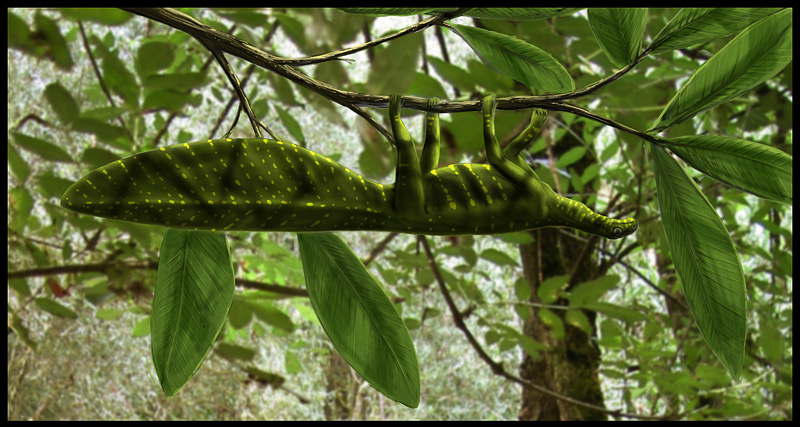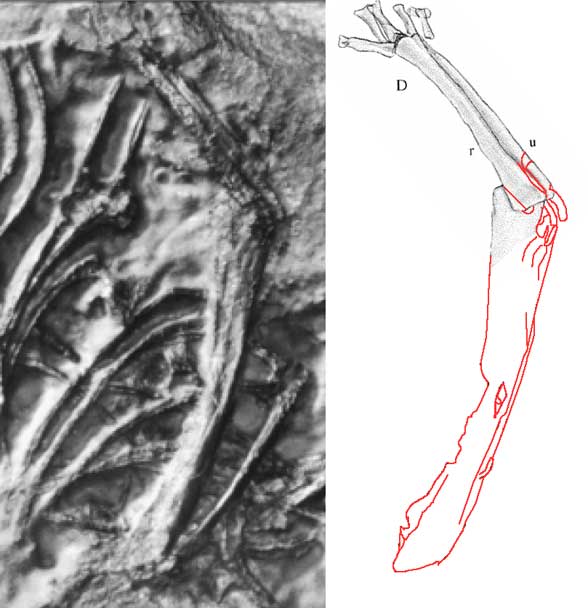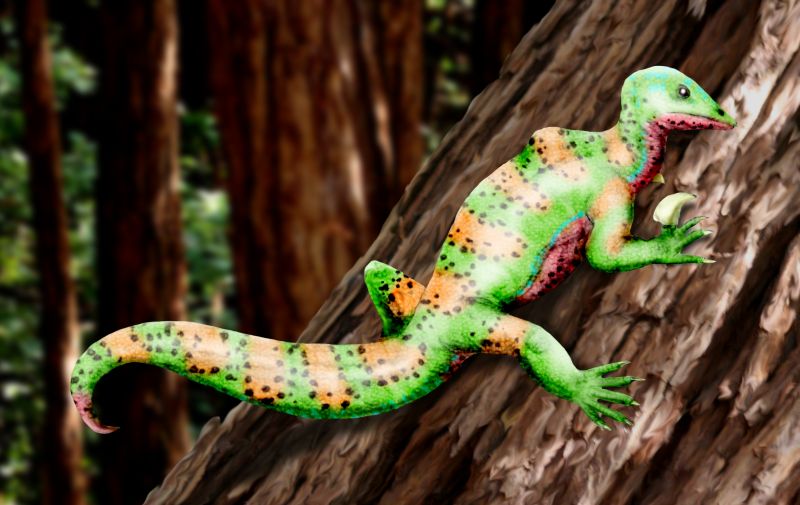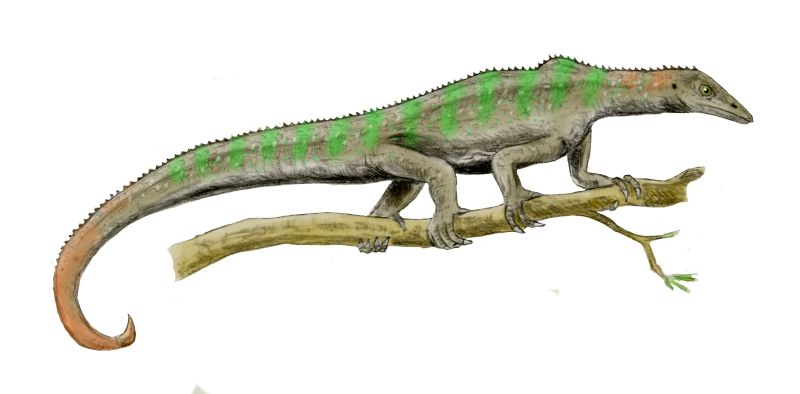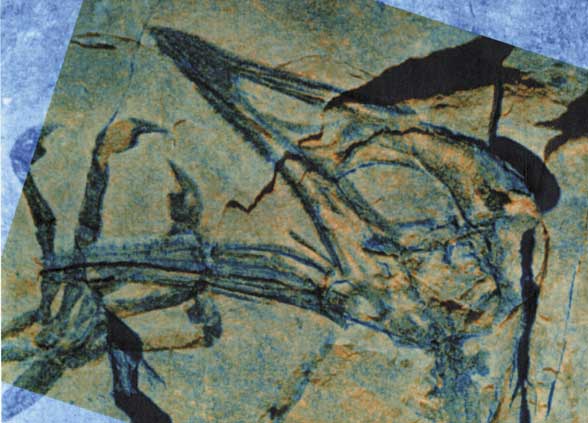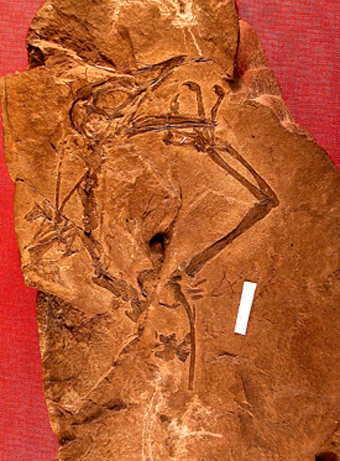[Recent Entries][Archive][Friends][User Info]
Below are the 4 most recent journal entries recorded in the "Сообщество, посвящённое ра" journal:| February 5th, 2012 | |
|---|---|
| 02:03 pm [industrialterro] [Link] |
Vallesaurus Vallesaurus is an extinct genus of Late Triassic elyurosaur drepanosauromorph. First found in Northern Italy in 1975, it is one of the most primitive drepanosaurs. V. cenenis is the type species, named in 2006. A second species, V. zorzinensis, was named in 2010. Vallesaurus is a small drepanosaurid about 15 centimetres (5.9 in) long. It is pentadactyl, with the 4th digit being longest and equal in length to the humerus. Its tarsus has a centrale, or an ankle bone which articulates with the tibia. In addition, Vallesaurus also has modified distal tarsals and metatarsals, and a clawless hallux. Vallesaurus differs in some characteristics from another drepanosaur, Megalancosaurus. Vallesaurus has a proportionally shorter and higher snout, a thicker and larger maxilla and set of maxillary teeth, and a shorter cervical vertebra. It also lacks the fusion between the neural spines of the second and third dorsal vertebrae. Vallesaurus differs from Drepanosaurus, another drepanosaur, in that it lacks the enormous claw found on the second digit of the manus. It can be distinguished from Drepanosaurus, Megalancosaurus and possibly Dolabrosaurus in the lack of a terminal spine at the end of the tail. In addition, Vallesaurus also differs from Hypuronector, a related drepanosaur, in having anteroposteriorly extended neural spines of the anterior dorsal vertebrae and forelimbs much shorter than the hindlimbs. Vallesaurus shares with all other known drepanosaurids a body structure that indicates a specialized adaptation toward climbing, especially on narrow supports such as the twigs of trees. The manus of Vallesaurus has no opposable fingers; however, the shape and length of the fingers suggest good climbing abilities. Vallesaurus as well as other drepanosaurids possess a fussed-like structure in the anterior dorsal region and highly modified cervical vertebrae with adaptations that limited lateral mobility. Both structures indicate the presence of powerful muscles and ligaments for the extension of the neck. This possibly suggests a projectile feeding adaptation. The head was suddenly launched forward to catch prey and the limited lateral mobility prevented undesired jerks of the neck which could have dislocated the cervical vertebrae during the quick extension. In smaller drepanosaurids like Megalancosaurus and Vallesaurus, such adaptations may be related to an insectivorous diet. The teeth of Vallesaurus seem well suited to cut or crush the tough exoskeleton of insects and other arthropods.
Tags: Вымершие рептилии, Триас, авицефалы, диапсиды, дрепанозавроморфы |
| 01:46 pm [industrialterro] [Link] |
Hypuronector Hypuronector is a genus of extinct reptile from the Triassic Period that lived in what is now New Jersey. The etymology of the name translates as "deep-tailed swimmer from the lake." A member of the Simiosauria, Hypuronector is related to the arboreal Megalancosaurus. It was a small animal, estimated to be only 12 cm long in life. So far dozens of specimens of Hypuronector are known, but despite this, scientists have not found any complete skeletons. This makes attempts to reconstruct Hypuronector's body or life-style highly speculative and controversial. Despite their evolutionary relationship, it has been suggested by some scientists that Hypuronector may have had a different ecological niche than other Simiosaurs. It has long been accepted that Megalancosaurus was an arboreal chameleon-like animal. However, Hypuronector has been suggested to be aquatic due to its deep, paddle-like tail and the fact that its remains were found in an ancient lake bottom. The only current remains of Hypuronector are too scanty to reach a certain conclusion about the lifestyle practiced by members of the genus. The discovery of the animal's hands and feet might demonstrate adaptations present in its relatives for an arboreal lifestyle, which would help settle the debate. Unfortunately, paleontologists have no remains from Hypuronector's head, neck, feet or hands and thus must await future discoveries.
Tags: Вымершие рептилии, Триас, авицефалы, диапсиды, дрепанозавроморфы |
| 01:32 pm [industrialterro] [Link] |
Drepanosaurus Drepanosaurus is a genus of arboreal (tree-dwelling) reptile that lived during the Triassic Period. Only one specimen of Drepanosaurus has thus far been found. Sadly this specimen was incomplete and lacked a head and neck. Drepanosaurus was probably an insectivore, and lived in a coastal environment in what is now modern Italy. A full sized adult Drepanosaurus had a length of about half a meter. Its name means "scythe lizard", which is thought to refer either to the enlarged claw on its forelimb, or the claw-like structure at the tip of its prehensile tail. The structure at the end of the tail is made of fused vertebrae. The forelimb of Drepanosaurus is highly modified compared to other vertebrates and very robust. Its ulna was altered from being a forearm bone into an odd crescent shaped site for muscle attachment. The role played by the ulna in most tetrapods is replaced by an elongated carpal bone. Additional musculature would be attached to the high withers that characterized Drepanosaurus and its close relatives. A clue to the purpose of these large muscles can be found on its hand. The animal's "index finger" bore a large claw reminiscent of those born by dinosaurs such as Noasaurus and Baryonyx. However it is more likely that Drepanosaurus used its claw like the modern pygmy anteater, tearing through bark and insect nests to find invertebrate prey. Some researchers have forwarded the more far-fetched proposal that the claw was used to excavate burrows, but this is unlikely.
Tags: Вымершие рептилии, Триас, авицефалы, диапсиды, дрепанозавроморфы |
| 01:09 pm [industrialterro] [Link] |
Megalancosaurus Megalancosaurus is a genus of extinct reptile from the Late Triassic period of Northern Italy, and one of the best known drepanosaurids. The type species is M. preonensis; a translation of the animal's scientific name would be "long armed reptile from the Preone Valley". Megalancosaurus was fairly small, its adult length was only about 25 centimeters (10 inches). It was built like a chameleon and probably lived a similar arboreal lifestyle. Even its feet were chameleon like, with two toes being opposed to the remaining three. The tail is long, prehensile, and bears a strange claw like organ made of fused vertebrae at its end. Its shoulders formed a withers that would have served as an attachment site for especially strong muscles. Some specimens have an opposable digit on the feet. Because not all members of the species appear to bear this digit, it has been speculated that it is an instance of sexual dimorphism, only being possessed by whatever gender needed a stronger grip on the branch during copulation.
Tags: Вымершие рептилии, Триас, авицефалы, диапсиды, дрепанозавроморфы |



